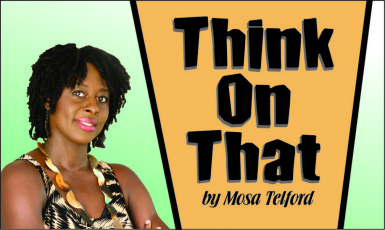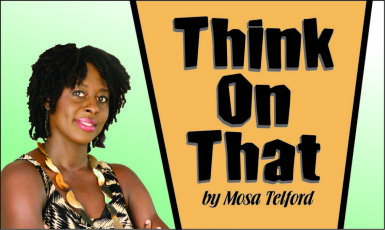(Guest writer)
Kojo McPherson is a multidisciplinary artist currently focused on filmmaking.
Kojo served as a scriptwriter on the popular radio serial drama Merundoi, for 4 ½ years. He is the winner RBC Focus – Filmmaker’s Immersion 2015, a ‘best feature film project and pitch’ competition held by the Trinidad & Tobago Film Festival. His latest film project, Adero, premiered May 2017 and is currently in the film festival circuit.
Kojo is the proud father of two girls, Kinaya and Mapenzi.
The day is February 23, 2016. The location: D’Urban Park. The atmosphere: jubilant. The sentiment: patriotic. A multitude of Guyanese side by side, rubbing shoulders (and goosebumps), cheering and crying – ecstatic. Thirty thousand-plus people caught up in the fabric of pride and shared identity, all seemingly cut from the same cloth of the 50 by 30-foot Golden Arrowhead which they are witnessing being hoisted into the sky.
Euphoria is a short-lived thing. Like Walt Whitman said, “We were together. I forget the rest.”
The Great Golden Arrowhead still flies in D’Urban Park. Flags, unfortunately, don’t nurture identity or social cohesion. They may symbolize values that a community aspires to; when worn on the body or used to adorn one’s property, they will state which nation one calls home. But flags can do little more than that. So, what engenders a shared sense of identity? That feeling that though you and I are born of different parents and grow in different communities watching our parents work in different occupations to raise us, we are the same? The Arts – particularly when exhibited through mass media like radio, television and cinema.
Without a shot fired
The issue (and imbalance) with our neighbours – on all compass points – isn’t just that they have larger standing armies, sophisticated military equipment and generally speaking far greater destructive power than our armed forces; without engaging in any armed conflict they have already chipped away at our sovereignty, territorial and otherwise. Those who have visited border communities, particularly in the hinterland have seen this. Walk through the commercial centre of Lethem or check the refrigerator at just about any restaurant or grocery there and you may feel the urge to check if you got your passport stamped. I first got this feeling when I attended a homecoming party in Nappi village, Region Nine for the Toshao’s wife; the music set played Brazilian two-step exclusively. You may feel these examples are of little consequence, a natural result of a community’s proximity to a national border, of little consequence to the discussion but it highlights, in a very grounded and demonstrable way, the fact that there is nothing coming from our side of the border to fill the void. Whether it is the goods that they consume, the clothing that they wear, the radio they listen to, those in the hinterland are being inundated by a national character that is overwhelmingly not Guyanese. (But curiously enough though, I feel that way nearly every time I listen to ‘local’ radio in Georgetown.)
Buy local
The arts are essential to any complete national life. The state owes it to itself to sustain and encourage them. Ill fares the race which fails to salute the arts with the reverence and delight which are their due. – Winston Churchill
I’m not suggesting that we place our country behind a firewall, that we stop consuming foreign music, movies and television. I’m suggesting that we recognize and protect our own interests. Our neighbours and friends do.
“Public diplomacy refers to government-sponsored programs intended to inform or influence public opinion in other countries; its chief instruments are publications, motion pictures, cultural exchanges, radio and television.” (US Department of State, Dictionary of International Relations Terms, 1987, p. 85)
And…
“Simply put…the BBC World Service represents the most public way the British Government carries out public diplomacy. This follows from the definition of public diplomacy as the ways in which an international actor tries to influence foreign publics.” (Britain’s International Broadcasting, Rajesh Mirchandani and Abdullahi Tasiu Abubakar. Figueroa Press, 2014, p. 7)
“I tried to put a spell on him, but his spirit was illiterate.”
“…perhaps a revolution through the arts can bring around and influence Guyanese to be proud citizens; it can be a start towards an identity grounded in diversity.” – Laura George
Just over two years ago I stood in the George Walcott Lecture Theatre at UG and heard a coalition candidate say, “We don’t need poets” (and I admit, as a poet, I felt personally offended). The address was about the need to focus on STEM education to fuel the vision of an expanded infrastructure of roads and aerodromes. All well and good but why not both; can we not produce scientists and artists? We face external threats made worse by the fact that those living in our border towns don’t necessarily identify strongly with being Guyanese. Some years ago, a documentary was produced by University of Guyana students that highlighted the phenomenon of residents in North Rupununi referring to themselves as “Guy-Braz”. There are large swaths of the country where it is impossible to receive a cell phone signal but not inconceivable that you could pick up a radio signal from one of our direct neighbours. We have people living within our borders that just as readily cross the border (or otherwise access from across the border) to acquire their basic necessities. No need here for artists to create depictions of the familiar, to remind us of what is quintessentially Guyanese.
False metrics
There is this idea that if we cannot quantify it by the ton like sugar, by the ounce like gold or by the cubic metre like timber than it does not qualify as having value, as being a resource. I suppose this mindset is indicative of the economy that we inherited upon gaining independence, one based primarily on exploiting raw resources of bauxite, logs, gold, rice and sugar. Fifty years on we are still grappling with the processing of many of these raw resources into value-added products on a large-scale (if on any scale at all): aluminium from bauxite, jewelry from gold, cereal and flour from rice, which mirrors our failure to leverage the creative energies of our individuals. And proof of not only the existence but the power and dynamism of that creative energy is evident in, arguably, our most successful Guyanese artists ranging from E R Braithwaithe (Writer), CCH Pounder (Actress), Peter Minshall (Carnival Artist), and Norman Beaton (Actor). While these incredibly successful individuals were all born in Guyana they were cultivated as artists abroad.
Putting green in the economy
Until those in power understand the economic windfall they are sitting on when it comes to the arts I doubt whether you’ll see much support given or infrastructure built to truly support and encourage Guyanese creatives. – Alysia S. Christiani Editor, Rewind and Come Again.
If I overstate the importance of arts and culture as tools of soft power, of hardening, if not expanding on one’s sphere of influence then consider economic power.
Forget the macro numbers from Hollywood, Bollywood and Nollywood for a minute; read the credits of your favourite television drama or sitcom, movie, or even foreign news broadcast. Each line in the credits is a job, a source of income. That’s money going directly into the pockets of someone labouring with their mind and body. That’s a career.
That’s an economy fueled on an unlimited resource: human creativity and ingenuity. That kind of resource is wholly owned by Guyana and Guyanese. That kind of resource isn’t contingent on global prices and international political intrigue.
That kind of resource doesn’t leave an ugly environmental footprint. That kind of resource doesn’t dry up in a decade or two.







